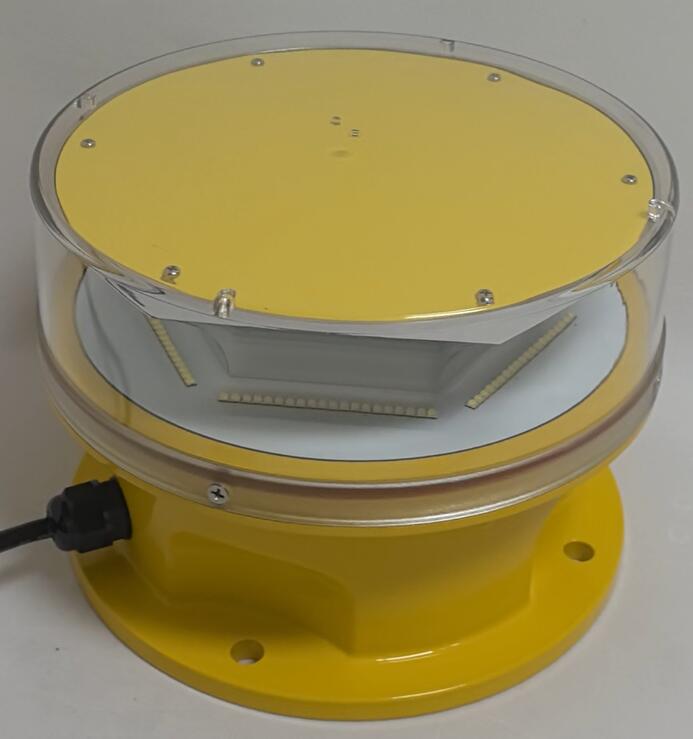Aviation Aircraft Warning Light Standards: Essential Safeguards in Modern Airspace
In the dynamic world of aviation, safety remains the cornerstone of all infrastructure and operational decisions. One of the most critical yet often overlooked components in maintaining airspace safety is the aviation aircraft warning light system. Designed to alert pilots to the presence of obstacles, these lights help reduce the risk of in-air collisions, particularly in low-visibility conditions. This article explores the standards, functions, and evolving technology behind aviation aircraft warning light systems in a streamlined, original, and informative manner.
The Purpose of Aviation Aircraft Warning Light Systems
Tall structures such as communication towers, skyscrapers, wind turbines, and industrial chimneys present significant hazards to aircraft, particularly during night-time operations or adverse weather conditions. The aviation aircraft warning light acts as a visual signal to alert pilots of these obstructions, helping them to adjust flight paths and avoid potential collisions.
These lighting systems are a vital part of both civil and military aviation environments. Without them, the risk of midair accidents would drastically increase, especially near airports or in heavily developed urban zones.

Classification of Aviation Aircraft Warning Light Types
Aviation aircraft warning light systems are classified based on intensity, which corresponds to the height and location of the structure:
Low-Intensity Lights: Generally used for structures below 45 meters. These lights are steady-burning and red, typically visible at night.
Medium-Intensity Lights: Suitable for buildings between 45 to 105 meters. These can be either red for night use or white for day and night, and may flash at specific intervals.

High-Intensity Lights: Required for structures over 150 meters, especially in remote or open areas. These lights are white and flash at regular intervals, making the structure visible from considerable distances both day and night.
Each lighting type must conform to international aviation standards and remain clearly visible from all relevant flight angles.
International Compliance and Guidelines
While specific national regulations vary, most countries adhere to the standards set by the International Civil Aviation Organization (ICAO). The ICAO’s Annex 14 outlines the global requirements for obstacle lighting, including specifications on color, intensity, and placement.
The aviation aircraft warning light must be installed at specific points:
At the top of the obstruction.
At intermediate levels if the structure is especially tall or uneven in shape.
| aviation aircraft warning light | aviation aircraft warning lights |
At any extensions, such as antennas or cranes, which increase the total height.
Compliance is not just about meeting aviation safety laws; it’s about participating in a broader global effort to standardize safety practices for all airspace users.
Installation and Operational Best Practices
For aviation aircraft warning light systems to function effectively, proper installation and maintenance are critical. Key practices include:
Positioning for Maximum Visibility: Lights must not be obstructed by other elements of the structure and should be clearly visible from all relevant approach paths.
Routine Maintenance: Lighting systems must be regularly tested and maintained to prevent outages. Failures must be repaired immediately to avoid safety risks.
Backup Power Sources: In areas prone to power interruptions, backup systems such as battery packs or solar-powered solutions are often installed to ensure uninterrupted operation.
Operators are also expected to monitor their systems continuously and provide alerts to aviation authorities if any lights become non-operational, especially near airports or heliports.
Integration with Emerging Technologies
Technological advancements are shaping a new generation of aviation aircraft warning light systems:
Smart Lighting Systems: These incorporate sensors and remote monitoring capabilities, allowing operators to detect malfunctions instantly and respond proactively.
LED Technology: Traditional halogen lights are increasingly being replaced by LED-based systems, which offer higher efficiency, longer lifespan, and better visibility.
Solar-Powered Systems: Especially useful for remote or off-grid structures, solar-powered warning lights reduce reliance on external power supplies while maintaining regulatory compliance.
As urban landscapes evolve and new aviation technologies like drones and electric air taxis gain prominence, the demand for smarter, adaptive warning systems is expected to grow.
Sector-Specific Applications
The aviation aircraft warning light is not a one-size-fits-all solution. Different sectors require customized approaches:
Telecommunications: Cell towers and radio masts are among the most frequently lit structures due to their height and widespread distribution.
Construction: Cranes often exceed regulated height limits and require temporary lighting during use.
Energy Infrastructure: Wind farms and high-voltage transmission lines must integrate warning lights to remain visible to passing aircraft.
Urban Development: As cities expand vertically, high-rise buildings are increasingly subject to lighting requirements, especially those within airport control zones.
In each case, compliance is necessary not just for legal purposes but to ensure the collective safety of people in the air and on the ground.
Regulatory Oversight and Reporting Obligations
Aviation authorities require strict reporting of any lighting outages or structural changes that may impact visibility. Operators must notify relevant agencies such as air navigation service providers and civil aviation authorities when:
A light fails and cannot be immediately repaired.
A new structure is erected that exceeds regulated heights.
A previously lit structure is decommissioned or altered in shape.
Prompt reporting allows for the issuance of NOTAMs (Notices to Airmen) to alert pilots of potential hazards, helping maintain continuous airspace safety.
The aviation aircraft warning light serves as a silent but critical guardian in the skies. Though simple in concept, its role in aviation safety cannot be overstated. As air traffic continues to increase and urban environments grow more complex, the importance of maintaining and evolving these systems becomes ever more vital.
By understanding and adhering to aviation aircraft warning light standards, stakeholders contribute to a safer, more reliable global airspace—one where technology and regulation work hand in hand to prevent accidents before they occur.
